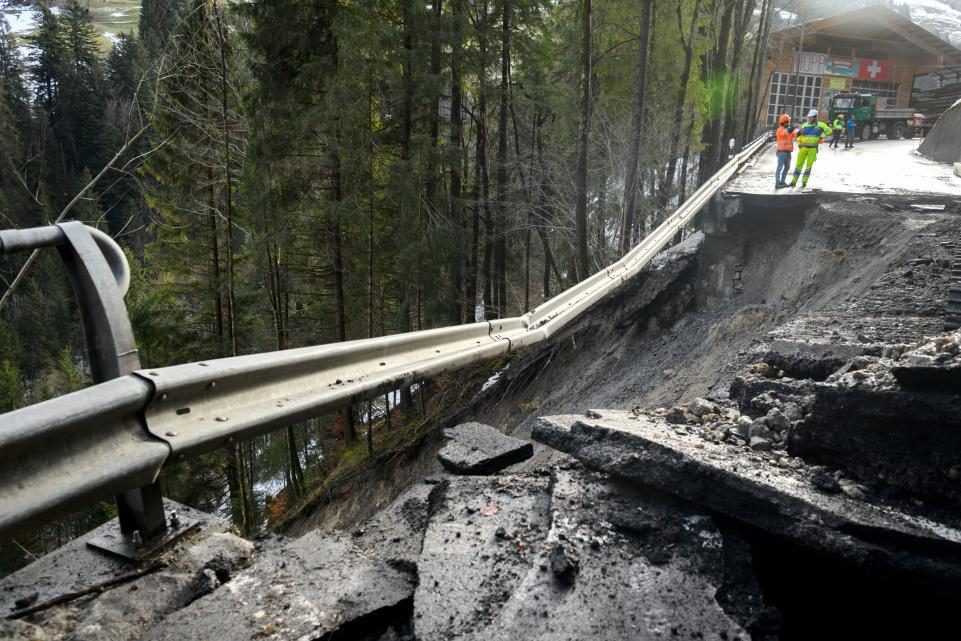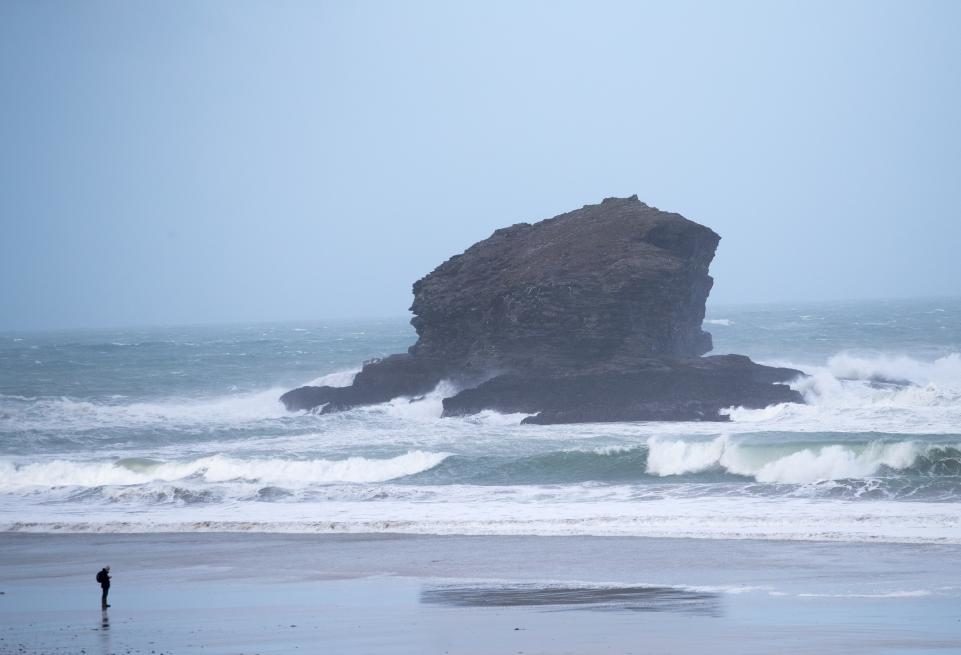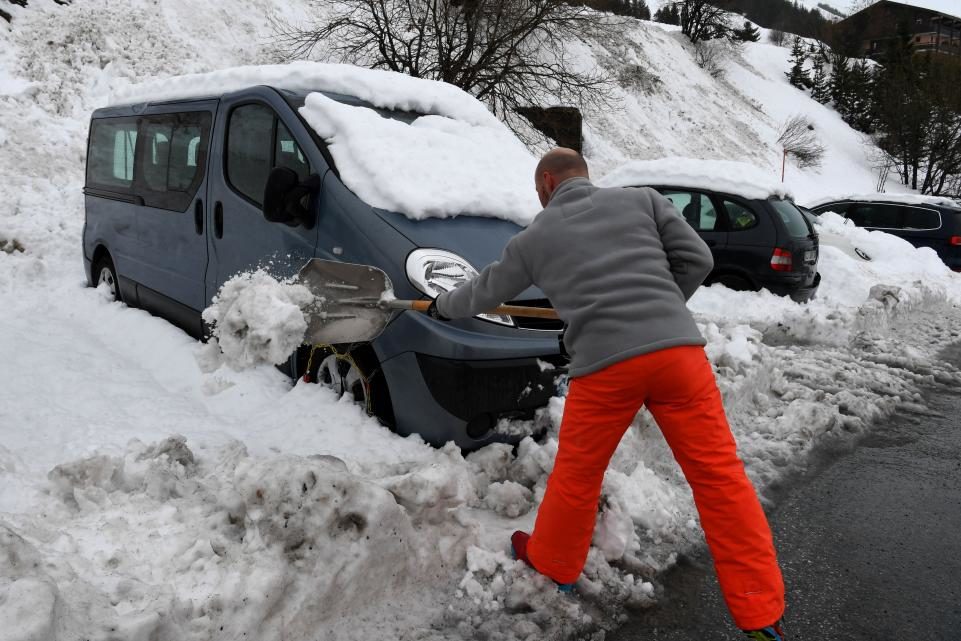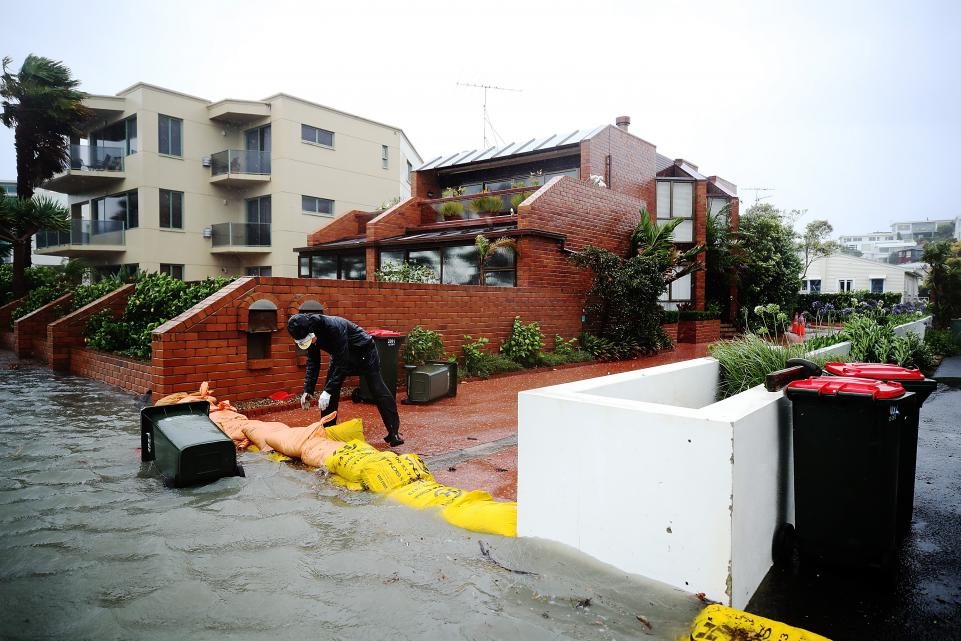
Extreme weather struck other parts of the world, too. From flooding and snowfall to high wind speeds and waves, here are a few extreme weather conditions happening beyond the I-95 corridor.
Europe
Winter storm Eleanor struck huge swaths of Europe on Wednesday with winds up to 100 mph, reported The New York Times on Wednesday.
Thousands were left without power. Downed trees and overturned vehicles took over highways and train tracks. One skier in the French Alps died after being hit by a falling tree. By Thursday, flood warnings were in place across the U.K., reported The Guardian.

Comment: A 93-year-old woman died in France as a result of the flooding, which hit areas of France and Germany hard:
Meanwhile, the French Alps were on maximum avalanche alert Thursday as Storm Eleanor swept through Europe, killing at least four people and fanning rare winter wildfires in Corsica.
With the mountains packed with skiiers for the school holidays, major resort Val d'Isere closed its runs for the day because of heavy snowfall, while Chamonix said it was shutting many of its lifts as a precautionary measure.
"The objective is to keep everyone safe," said David Ponson, ski chief in the Alpine Savoie region, as many pistes were shut for a second day.
At the other extreme, nearly 400 firefighters on the French Mediterranean island of Corsica were battling blazes fanned by Eleanor's strong gusts of wind, with three people injured in a fire overnight.
Three hundred goats were killed in the blaze at Chiatra-Canale di Verde near the island's east coast and 10 homes burnt - five of them completely destroyed, local authorities said.
The prefecture added that the intensity of the blazes was "exceptional in the middle of winter." Troops from the local air base have been deployed to help fight the flames.
Eleanor, the fourth winter storm to hit Europe since December, swept into the continent on Wednesday after battering Britain and Ireland.
It has left at least four people dead, including a 21-year-old skiier hit by a falling tree in France and a couple in their 60s swept away on Spain's northern Basque coast by a huge wave.
On Thursday, firefighters said a woman in her 90s died of a heart attack in Crets-en-Belledonne in the French Alps after floods sent a torrent of mud and water into her home.
And a volunteer rescuer was reported missing after rushing to help when a car plunged into an overflowing river in the Alpine village of Le Moutaret.
At Lenk in central Switzerland, eight people were hurt when a violent gust of wind overturned a railway carriage.
In the Netherlands, Eleanor has dealt about 10 million euros ($12 million) of damage to buildings and cars, the Dutch insurers' union estimated, cited by public television.
The whole of Spain's northern coast remained on "orange" alert - the second highest on a four-point scale - because of the risk from strong winds and large waves.
More than 40 towns in southwestern Spain have meanwhile brought forward their annual Epiphany feast parades - celebrating the coming of the three wise men with gifts for Jesus - to Thursday because of heavy rain forecast Friday.
In western Germany, the Mosel river was closed to all shipping, with water levels 4 meters (13 feet) higher than usual. The Neckar river in the southwest was closed between the cities of Mannheim and Heilbronn.
Along the lower reaches of the Rhine, water levels were predicted to rise until the weekend, the German news agency dpa reported. Ships along the busy waterway near Cologne were ordered to reduce their speed and remain in constant radio contact with authorities.
The worst of the storm appeared to have passed by Thursday, though much of eastern France was still on "orange" alert for heavy winds, floods and avalanches.
"The intensity of the rain and melting snow bring a risk of floods via overflowing streams and mudslides," warned forecaster Cecile Coleou.
About 29,000 French homes remained without power, a third of them in Corsica.
Germany lowered its alert for violent winds Wednesday evening, but high tides were worrying several states, including in the Moselle Valley where heavy downpours have halted boat traffic.
The Rhine river was set to surge to seven meters (23 feet) on Thursday and was still rising, the Bild newspaper reported. River traffic will be suspended if it hits 8.3 meters.
The storm had snarled air traffic on Wednesday, briefly shutting the Strasbourg and Basel-Mulhouse airports and delaying departures from Paris, Frankfurt and Amsterdam. It also played havoc with road and rail transport, leaving branches, electrical lines and other debris strewn across tracks and highways.

In New Zealand, a summer storm hit central and lower North Island with heavy rain and gale-force winds.

China
Central and eastern China have been dealing with heavy snowfall and blizzard conditions since Tuesday.
Though the blizzard alert was lifted on Friday, more snow was expected across the north over the weekend, reported Reuters. Downed power lines scrapped power in Suizhou, a city of 2.5 million people.
The snowfall killed at least 10 people, reported the South China Morning Post. The hardest-hit provinces were Shanxi, Henan, Hubei, Anhui and Jiangsu. More than 16 inches of snow fell in parts of Henan, Hubei and Anhui. About 200 homes were destroyed by the blizzards.



Reader Comments
to our Newsletter